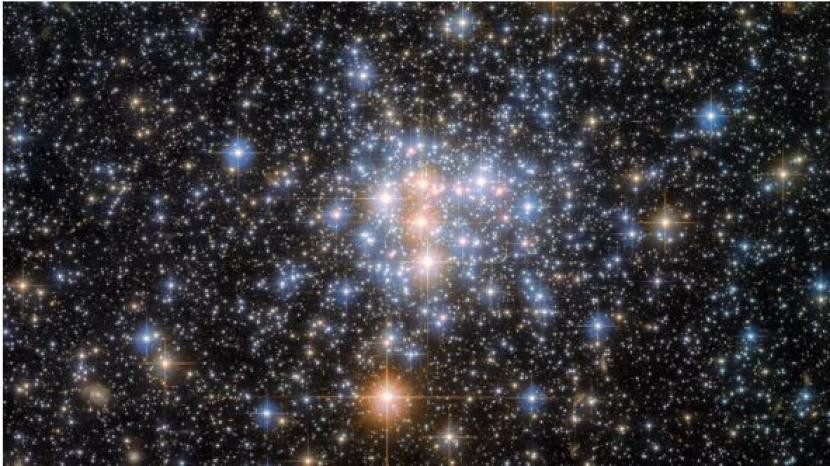What is in space besides sun and moons?

REPUBLIKA KIDS -- Hello Kids... Outer space is the expanse beyond celestial bodies and their atmosphere which is not empty. Outer space is a nearly perfect vacuum containing low-density particles, primarily hydrogen and helium plasma as well as electromagnetic radiation, magnetic fields, neutrinos, dust, cosmic rays.
The basic temperature of outer space, as determined by the background radiation from the Big Bang, is 2.7 kelvin (−270 °C; −455 °F). Intergalactic plasma is estimated to account for about half of the baryonic (ordinary) matter in the universe, having a density of less than one hydrogen atom per cubic meter and a kinetic temperature of millions of kelvin. Local concentrations of matter have condensed into stars and galaxies.
Intergalactic space occupies most of the volume of the universe, and even galaxies and star systems consist almost entirely of space. Most of the remaining mass energy in the observable universe consists of unknown forms, called dark matter and dark energy.
ALSO READ: Why is seawater salty?
Outer space does not begin at a certain height above the Earth's surface. The Kármán Line, an altitude of 100 km (62 mi) above sea level, is conventionally used as the outer space starting point in outer space treaties and for space records. Certain parts of the upper stratosphere and mesosphere are sometimes referred to as "near space".
The framework for international space law was established through the Outer Space Treaty, which entered into force on 10 October 1967. This treaty excluded any claims of national sovereignty and permitted all countries to freely explore outer space. Despite a draft UN resolution for the peaceful uses of outer space, anti-satellite weapons have been tested in Earth orbit.
ALSO READ: Why is the sky blue?


 Sekolah - 06 May 2025
Sekolah - 06 May 2025




